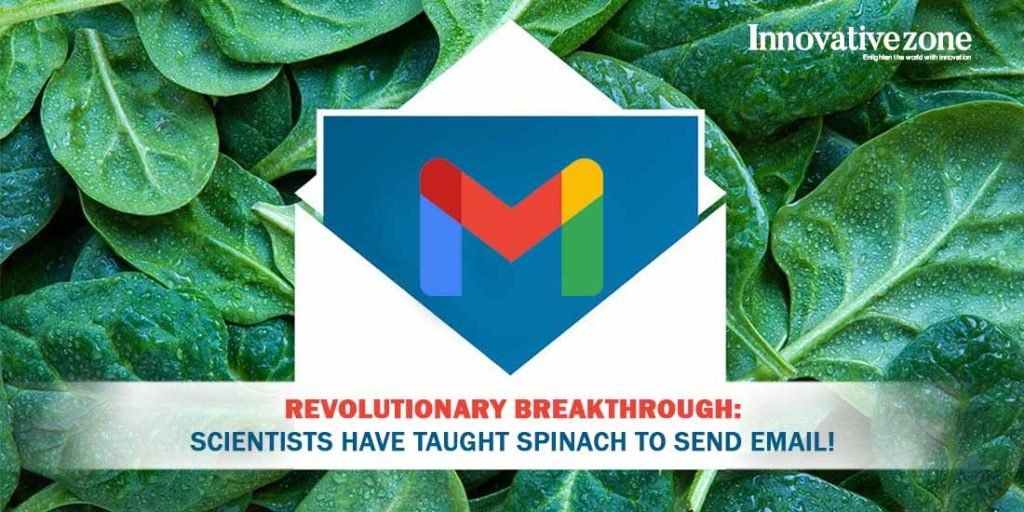Revolutionary Breakthrough: Scientists have Taught Spinach to Send Email!
By: Ashwathy Nair
Yes, you heard it right! Now an everyday vegetable might be sending you an email, as scientists have taught an actual vegetable to send emails. There is a research that has been published online in journal Nature in the year 2016, which is called “Nitroaromatic detection and infrared communication from wild-type plants using plant nano bionics”.
The study revolves around “plant nano bionics that aims to embed non-native features into plants by interfacing them with specially formulated nanoparticles. Here, we show that living spinach plants (Spinacia oleracea) can be built to act as self-powered groundwater pre-concentrators and autosamplers of analytes and as infrared communication platforms that can send data to a smartphone.”
If it is explained in simpler terms then – The carbon nanotubes within the plant leaves releases a signal when the spinach roots recognise the presence of nitroaromatics in groundwater, a compound often used in explosives such as landmines. Then an infrared camera reads this signal, sending an email warning to the scientists.
This research is part of a larger area of study that includes electronic components and systems engineering in plants. The technology is known as “plant nano bionics” and it is essentially the procedure through which new abilities are provided to plants.
Professor Michael Strano, who led the study, was listed by Euronews, stating that “Plants are very good analytical chemists”; “They have an extensive root network in the soil that constantly analyzes groundwater, and have a way of self-powering the transportation of that water to the leaves.”
While the internet has just learnt about the research paper itself being over four years old.
The American University’s scientists have found about spinach being converted into carbon nanosheets, it can be operative as a catalyst in order to help make metal-air batteries and fuel cells to be more efficient.
Professor Shouzhong Zou, the one who led the paper explains that “This work will be suggesting that sustainable catalysts can be made for an oxygen reduction reaction from natural resources”.
Summarizing it, the paper adds that while genetic engineering can bring together channels of non-native communication such as de-greening, wilting or fluorescent expression of a protein, such approaches do not easily interfere with a wide range of electronic technologies, like infrared telecommunications or electronic signals, in obvious ways, and it may take time over hours or even days, whereas indirect communication through nanoparticle sensors may take place on much shorter time scales.


